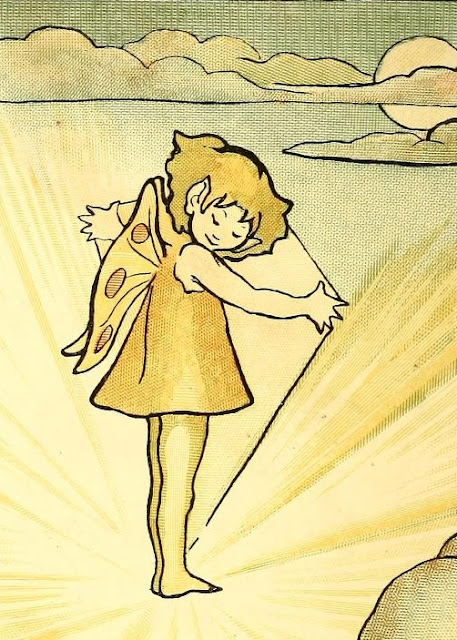 |
Nellie Syrett ~ Detail ~ 1900 The Kite That Went to the Moon The Other Side of the Sun: Fairy Stories by Evelyn Sharp London: Bodley Head |
I find these illustrations by Nellie Syrett to be both fascinating and lifeless. Technically, they are well composed and aesthetically pleasing, but the figures are as charming and cold as a china doll. Though they are dimensional and solid, there is nothing much behind the blank expressions. The little fairy girl in the detail above is the exception. However, I really enjoy these illustrations, in part for the delicate range of the colors, the design aspects, the "silk-like" texture of the images, and the otherworldly effect.
 |
Nellie Syrett ~ 1900 Frontispiece The Other Side of the Sun: Fairy Stories by Evelyn Sharp London: Bodley Head |
 |
Nellie Syrett ~ 1900 The Magician's Tea Party The Other Side of the Sun: Fairy Stories by Evelyn Sharp London: Bodley Head |
 |
Nellie Syrett ~ 1900 Somebody Else's Prince The Other Side of the Sun: Fairy Stories by Evelyn Sharp London: Bodley Head |
 |
Nellie Syrett ~ 1900 Somebody Else's Prince The Other Side of the Sun: Fairy Stories by Evelyn Sharp London: Bodley Head |
 |
Nellie Syrett ~ 1900 The Kite that Went to the Moon The Other Side of the Sun: Fairy Stories by Evelyn Sharp London: Bodley Head |
Click each image above for great detail.
Click The Other Side of the Sun to see the illustrations in their original context, and to read the fairy stories dedicated by Evelyn Sharp to "all the children I know on this side of the sun."
~~~~~~~~~~~~~~~
Nellie Syrett, and her sister, Netta Syrett, were associated with Aubrey Beardsley, and The Yellow Book. Netta was a prolific writer. Nellie illustrated two of Netta's fairy stories for children. She contributed an illustration to The Yellow Book July 1896 issue, and designed The Yellow Book October 1896 cover. I will be featuring more of her work in a later post.
~~~~~~~~~~~~~~~























